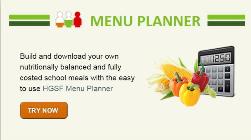
An innovative free School Meals Planner tool has been launched at a special plenary session of a leading global school feeding conference. The online and offline tool will for the first time enable users to plan and create nutritionally balanced and fully costed school meals using locally available food.
Creating a nutritionally balanced school menu using local ingredients is not an easy thing to do, especially when you are working within a tight budget. This is doubly true when the children relying on your school meals are from communities where food insecurity is high and malnutrition and anaemia are common conditions.
The School Meals Planner is the first tool of its kind to show the macro and micronutrient contents of cooked meals made from locally procured ingredients.
Developed by Imperial College London’s
Partnership for Child Development, the School Meals Planner was unveiled on 30th September at a special plenary meeting of the Global Child Nutrition Forum 2014 held in Vanderbijlpark near Johannesburg, South Africa. As the largest annual meeting on school feeding the menu planner was given a warm welcome by the Forum’s 250 participants including 12 state Ministers, drawn from 40 countries.

The tool employs gingerbread men to show visually if a meal is meeting the recommended daily intake of nutrients as identified by the UN’s Food and Agriculture Organisation and the World Health Organisation.
By linking local market prices for raw ingredients, the planner shows the user the actual cost of each meal. With this information, programme managers are able to create accurate and realistic school meal budgets.
Speaking at the launch, the Partnership for Child Development’s Executive Director, Dr Lesley Drake said, ‘School meals play a vital role in ensuring children have a healthy nutritionally balanced diet. This free tool means that you don’t need to be a nutritionist to create balanced healthy meals, anyone can do it.’
As well as acting as a menu design tool, the school meals planner acts as both an information access port for smallholder farmers so they know what foods to supply to the schools but also as a nutrition educational resource for schools to learn about healthy eating.
The School Meals Planner was trialled with the support of the Ghana School Feeding Programme who have been using it to create nutritionally balanced school meals for some of the 1.6 million Ghanaian schoolchildren who are fed by the programme every school day.
Susan Torson, Nutrition Officer for the Ghana School Feeding Programme, said ‘The School Meals Planner means the Government are better able to reach their targets on child nutrition.’
To ensure schoolchildren have nutritionally balanced diets the School Meals Planner is designed to work in conjunction with community focused nutrition and hygiene education programmes and with ‘handy measures’ – every day measuring utensils which caterers can use to accurately recreate balanced meals. The planner and this work is supported by Dubai Cares.
Susanne Torson continued, ‘One of the strengths of the Meals Planner is that it allows us to select local dishes using local ingredients which we know local farmers are producing.'
Following the success of the School Meals Planner in Ghana, the tool will be rolled out in other countries to ensure that more children are able to enjoy healthy and nutritious hot school meals.

